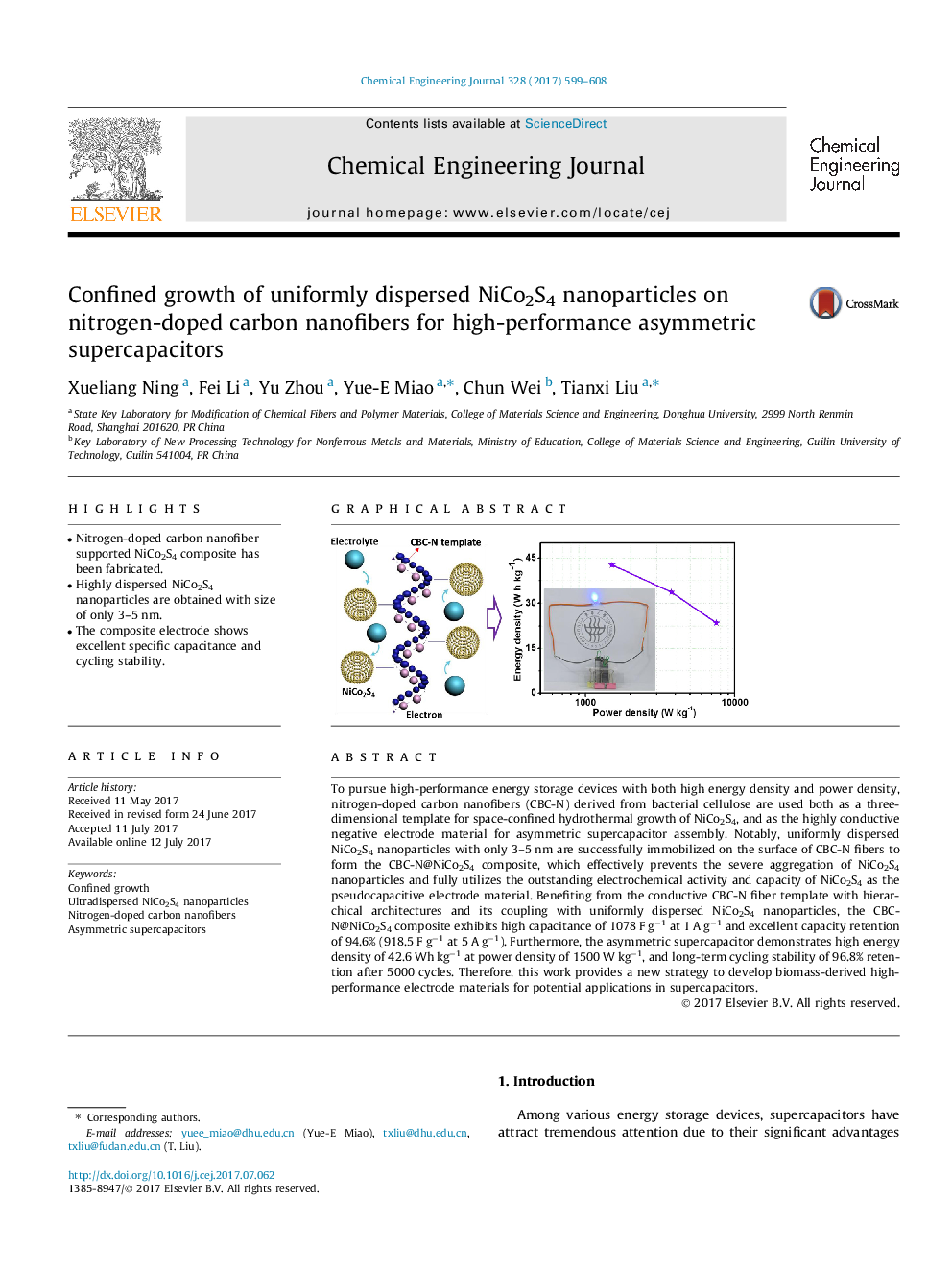| Article ID | Journal | Published Year | Pages | File Type |
|---|---|---|---|---|
| 6465369 | Chemical Engineering Journal | 2017 | 10 Pages |
â¢Nitrogen-doped carbon nanofiber supported NiCo2S4 composite has been fabricated.â¢Highly dispersed NiCo2S4 nanoparticles are obtained with size of only 3-5 nm.â¢The composite electrode shows excellent specific capacitance and cycling stability.
To pursue high-performance energy storage devices with both high energy density and power density, nitrogen-doped carbon nanofibers (CBC-N) derived from bacterial cellulose are used both as a three-dimensional template for space-confined hydrothermal growth of NiCo2S4, and as the highly conductive negative electrode material for asymmetric supercapacitor assembly. Notably, uniformly dispersed NiCo2S4 nanoparticles with only 3-5 nm are successfully immobilized on the surface of CBC-N fibers to form the CBC-N@NiCo2S4 composite, which effectively prevents the severe aggregation of NiCo2S4 nanoparticles and fully utilizes the outstanding electrochemical activity and capacity of NiCo2S4 as the pseudocapacitive electrode material. Benefiting from the conductive CBC-N fiber template with hierarchical architectures and its coupling with uniformly dispersed NiCo2S4 nanoparticles, the CBC-N@NiCo2S4 composite exhibits high capacitance of 1078 F gâ1 at 1 A gâ1 and excellent capacity retention of 94.6% (918.5 F gâ1 at 5 A gâ1). Furthermore, the asymmetric supercapacitor demonstrates high energy density of 42.6 Wh kgâ1 at power density of 1500 W kgâ1, and long-term cycling stability of 96.8% retention after 5000 cycles. Therefore, this work provides a new strategy to develop biomass-derived high-performance electrode materials for potential applications in supercapacitors.
Graphical abstractDownload high-res image (96KB)Download full-size image
